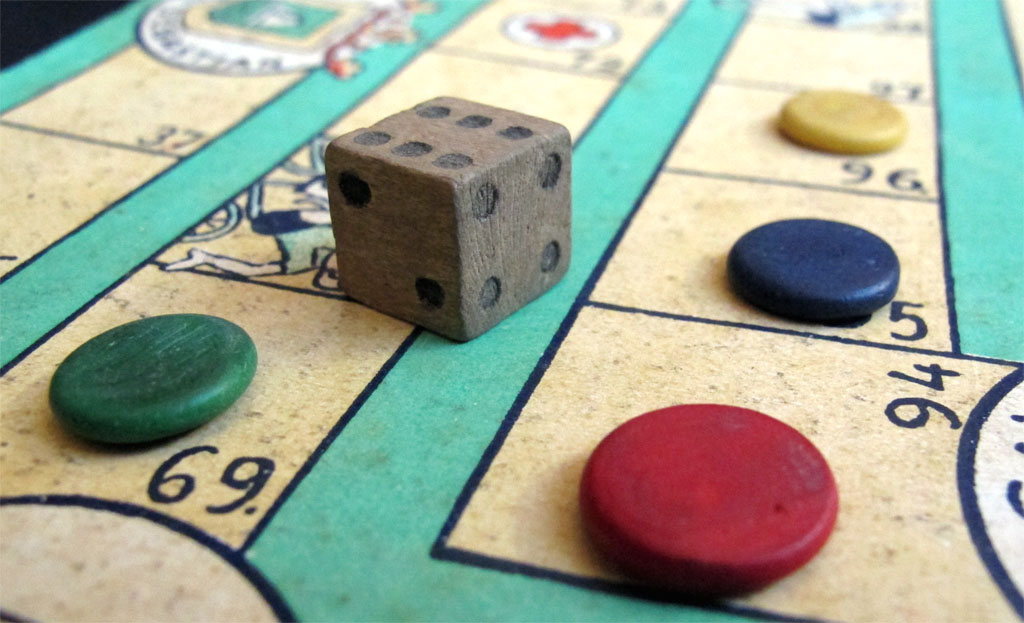
PINCHAZO
Spain, 1930s

Rare old Spanish game. It represents a race around Spain, but it is not called "Vuelta a Espaņa", as one might expect, but "Pinchazo", which means "puncture". The name is quite odd. I can think of some reasons for it, but the most obvious is that this game may be previous to the Vuelta. One must remember that the Vuelta only started in 1935 (much later than the Tour, the Giro or even the Volta a Catalunya)
However, I cannot date the game with precision. The cities in the board do not match any edition of la Vuelta (why should they if the game is not called "la Vuelta"?), and the pennants which represent the cities are not historically accurate and mix elements from different decades. Specifically, the Barcelona pennant still has the bat (which disappeared from the offical pennant in 1931) but, on the other hand, has just two red bars on each quarter, which might mean that the game is post-war (btw, "post-war" in Spain means post the civil war, 1936-39, since Spain did not take part in WWII).

Unfortunately, the rules of this game have been lost. It is strange, since the wooden counters and the die look (and probably are) original. At first look one would say that this is just another game of goose, and it is probably not too different from a game of goose, but there are some mysterious elements.
The game is composed of 110 fields (apart from the starting and finishing fields), 17 of which are cities, 6 are marked with a red cross, 7 are punctures and 6 are falls (one of them a double field (107-108) with a red mark. Of course the rules might just say that you miss one turn if you landl on a puncture, and you go back to the nearest red cross if you land on a fall, and it is quite probable that they say something similar.
On the other hand, before the name of some cities (not all of them), we can read P.3, P.4, P.5, P.6, P.10, P.20... To me this is quite mysterious and I cannot guess what these numbers may mean.

These small wooden counters, similar to others found on old Spanich games, fit perfectly the board (which by the way, measures 37 x 29 cms). As the box is just 1.5 cms high, one can safely assume that there were no gobelets in this game (though wooden gobelets were quite usual, If you had wooden counters, in Spanish games).
The innacurate Barcelona pennant.

Puncture, fall and red cross
 |
 |
 |
 |
 |
|
CULTURE IDEAS |
TOTUM REVOLUTUM THUMBNAILS |
NAMES ALPHABETICAL |
CATEGORIES LISTS |
WHAT'S NEW BLOG |